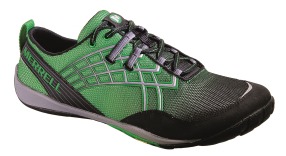 One of the comments I’ve seen a lot lately is that the minimalist running trend is over. A number of reasons are given to support this statement, and I thought I’d take a deeper look at two of the big ones.
One of the comments I’ve seen a lot lately is that the minimalist running trend is over. A number of reasons are given to support this statement, and I thought I’d take a deeper look at two of the big ones.
Injury Risk in Minimal Shoes
The first reason I typically see put forth as an explanation for why minimalism is dying is that it’s risky to run in minimalist shoes. There have indeed been lots of injury reports from minimalist runners, and I have no doubt that running in a minimalist shoe puts greater stress on the feet and ankles. In that sense I think it’s completely fair to say that minimalist shoes are not a risk-free cure-all for running injuries. Risk of certain types of injuries (e.g., metatarsal stress fractures) likely does go up, at least until the feet adapt to running in less shoe. Some people may never be able to run comfortably in a minimal shoe.
However, it’s also important to recognize that form changes like the shorter stride encouraged by barely-there footwear may be beneficial in reducing stress at places like the knee and hip. It’s all about tradeoffs. Risk of some types of injury might be higher in minimal shoes, risk of other types of injury might be lower.
The big question is whether risk of injury from running in minimal shoes is greater than risk from running in more traditional running footwear. It appears that it is not. For example, data from an Army study presented at the recent ACSM meeting showed that recruits in minimal shoes were at no greater risk of injury than recruits in more traditional footwear. One could even look at this result as showing that all the cushioning and gadgets in traditional running footwear don’t protect a runner any more than a minimal, stripped-down shoe.
So, is there a risk associated with going minimal? Yes, some parts of the body will experience increased risk of injury, and this risk will likely be elevated if too rapid a transition is made. But, minimal shoes don’t seem to be any riskier than traditional footwear, and they might actually be beneficial if we give credence to reports of people overcoming injury by going minimal (and I see no reason not to believe these people as different shoes apply force to the body in different ways).
Minimalist Shoe Sales Trends
The second argument I see put forth in supporting the “minimalism is dead” meme is that sales of minimal shoes have tanked. Have they really? First off, how we define minimal is important. If by minimal we mean Vibram Fivefingers, I’d agree that sales have dropped off. But, if by minimal we mean something more along the lines of not in the traditional motion control-stability-neutral 12mm drop spectrum, then I question the validity of this analysis. For example, Nike Free shoes are among the best selling, if not the best selling, shoes in the US right now. Granted they are mostly a fashion item, but so are most other running shoes.
In the May 2013 sales report from SportsOneSource we find the following statement: “Sales of Minimal/Barefoot Running Footwear, net of Nike Free, declined by nearly 30 percent and were only 4 percent of all running shoes sold. Sales of Nike Free gained more than one-third.” But, when you look at the accompanying pie chart you find the following:
Minimalist is the biggest wedge there at 19%. I can only assume that Nike Free is included in that wedge which explains its size, but the SOS analysis always removes it from the category in the written analysis on the belief that it is more a fashion shoe than a running shoe. Not sure then what is included in the “lightweight fashion running” category. It’s also worth pointing out that the SOS data includes sales from places like sporting goods stores, department stores, family footwear stores, discount shoe stores, etc. Not necessarily places that runners are shopping.
To get a better picture of how things look specifically in the running market, we can turn to Leisure Trends Group’s monthly reporting data. I went through the last 16 months of run specialty sales reports from LTG and compiled them into the following table – each number represents the percent change in dollar sales in each footwear category at run specialty relative to the same month in the previous year (green means increased dollar sales, red means decreased relative to that month in the previous year; darker colors indicate double-digit change):
(click on the image above for a larger view)
Data on minimal shoe sales were not always reported the same way, and sometimes they were not reported at all, but I think the table gives a good flavor for trends. What you’ll notice is that shoe sales as a whole at specialty retail were pretty lousy this past winter (it was a rough winter for running outdoors compared to last year, at least in my neck of the woods). If anything, minimal did better in terms of relative growth compared to more traditional categories in Dec 2012-Mar 2103, though the total dollar sales of minimal shoes is small relative to the traditional categories (see below). Even looking at April 2013 sales, though minimal as a whole did not do as well as other categories, it seems that the numbers were brought down by reduced sales of minimal trail shoes. Minimal road shoes experienced a 10% increase in sales in April relative to last year. The big thing that sticks out to me here is not that minimal is tanking, it’s that trail shoes and motion control shoe sales are tanking at run specialty.
In terms of relative market share at run specialty, we can look at the LTG data from February 2103 to get an idea of how things break down (Feb was the last time dollar amounts for all categories were reported).
Stability: $20 million (42.6%)
Neutral: $18 million (38.3%)
Minimalist: $4 million (8.5%)
Motion Control: $2 million (4.3%)
Racing: $2 million (4.3%)
Trail: $1 million (2.1%)
So yes, minimal as a category (not sure how it is defined by LTG) is still a small portion of overall market at run specialty. Furthermore, we are not seeing the the level of growth that was seen back in early 2012, which suggests to me not that sales are down so much as that the market for minimal shoes has matured. In fact, the only month where sales were down relative to last year was a month in which sales for all other categories were down equally or even more.
One other interesting data point arrived in my inbox this morning from LTG in the form of an Independent Shoe Store Market Summary. My assumption is that these are generalist stores that sell both running and fashion shoes (much like my local store Joe King’s). For Jan-April 2013, here are the top six running brands at independent shoe stores: New Balance, Brooks, Asics, Saucony, Nike, Merrell. I was surprised to see Merrell there, and the report highlights the fact that “Merrell’s minimalist styles jumped 31% with names like Bare, Crush Glove and Mix Master.”
So what’s the take-home here? If you read the SportsOneSource data then minimal are down big time if you ignore Nike Free and recall the varied retail sources that they pull their sales data from. If you look at Leisure Trends Group data from running specialty stores then it’s clear that growth of minimal as a category has slowed, but has not declined (except for minimal trail which may be a victim of the overall sharp decline in trail shoe sales as a whole). And at independent shoe stores minimal lines like Merrell Barefoot seem to be doing quite well so far in 2013. Unfortunately, shoe sales through the big box, discount, mall, sporting goods, etc. channels are huge compared to sales at specialty running, and have the ability to drive what is developed and pushed on the market, so sales to non-runners may influence what type of shoes are available to runners.
Some final thoughts:
1. I still have no idea how minimal is defined by any of these organizations.
2. You have to consider the data source and the type of consumer represented when trying to interpret trends for the running market.
3. The data from the next few months (Spring-Summer sales) will be telling as to the health of minimalist as a category at specialty running. I’ll share the data as I get it!
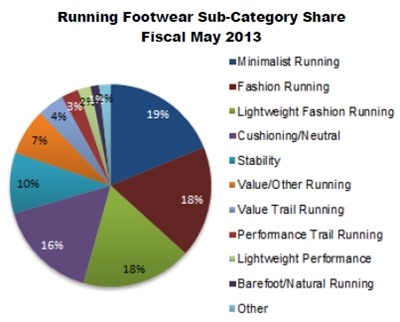

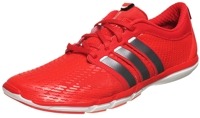
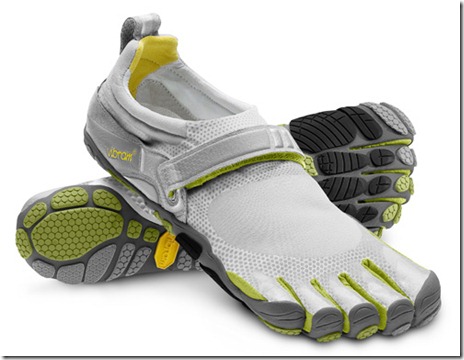
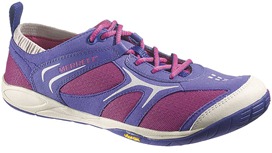
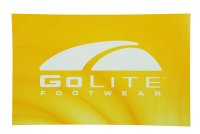
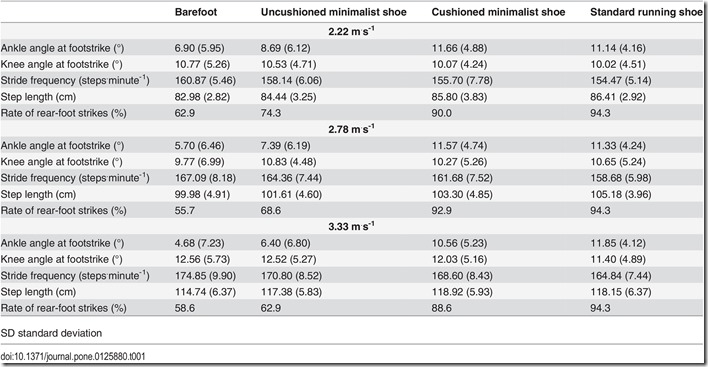














My theory is- “if it ain’t broke don’t fix it”. If you are running fine with no injuries or pain (outside the ‘normal’ running ones) then there is no reason to switch.
Like many runners I read Born to Run and tried dipping into the minimalist pool.
After about 3 years of flirting with it (NB Minimus trail, VFF Bikilas, NB Minimus MR0 Road) what I got out of it was this-
I was a mild pronating runner and became a forefoot striker.
I’m not sure if that improved my times or ability to run longer or allowed me to avoid injury (since I had no injuries when heel striking).
My journey to forefoot strike was riddled with plantar, calf pain, and an metatarsal stress fracture.
The above I admit was all my fault as I didn’t progress as gradually perhaps as I should have which kind of leads me to my point-
Most runners are a stubborn type A sort who will run through pain and discomfort because we are obsessed with running. Telling us to lay off on the mileage will probably go unheeded. So we will most likely injury ourselves in these shoes initially.
Also I love to run so telling me to run 1 mile when I want to run 10 is not gonna happen.
and I think many runners feel the same way.
If i’m feeling good running I most likely will not switch shoes and run less or keep switching out shoes just to be minimalist.
No matter how romantic my heart may find running barefoot my legs and mind disagree.
The beauty of running is the zen-like state you get into when everything is going well.
Focusing on foot strike and paring down my millage does a lot to kill the zen.
Whatever keeps me running in that zen-like state is what I will wear and I probably won’t switch shoes for fear of losing that. So i will probably buy the same sneaker over and over.
Currently I only have 2 pairs of shoes for running- 1 for road running (which I mostly do) and another pair for trails.
That being said, if you have a history of injuries and leg issues outside the “norm” then try minimalism.
Another common character trait of most runners is we will try just about ANYTHING to get us back to running again.
For the record I still occasionally walk in my VFF.
My running shoe is the Kinvera 3 which while perhaps considered “minimal” works for me as it addresses my biggest problem with minimal shoes- lack of cushion.
I run on roads and usually for 10-15 miles at a time and the lack of cushioning in minimal shoes is hard to ignore at those distances.
I’m 6′ tall and 170 lbs and I can’t see myself tiptoeing like a ballerina for 13 miles (and yes I know there are always the outliers- 200 lb guys running barefoot marathons).
In the end I just feel based on completely personal and subjective reasons mentioned above minimalism will always be a niche product.
What we are seeing now is just it leveling out to normal pre-Born to Run state it was always at.
But I’m no expert, just a runner with a day job unrelated to running or therapy or bio mechanics etc…
Thanks for reading
I agree with most everything here except the last bit. Pre Born-to-Run there was virtually no market for minimal shoes outside of racing flats, now we have a category that has doubled racing flats in sales. I think the category is new and is here to stay, the question is how big it ultimately will be.
—-
Pete Larson’s Web Links:
-My book: Tread Lightly: link to ow.ly
-Blog: https://runblogger.com
-Twitter: link to twitter.com
-Facebook Page: link to facebook.com…
-Discussion Forum: https://runblogger.com/forum
I don’t know if the minimalist shoe trend is over… it’s hard to say if it ever blew up as a “trend” outside of the dedicated running community… it seems to me like the Big Boys of the Athletic Shoe World—Nike and Adidas—didn’t really take to it outside of entries whose status as true minimalist shoes is open to debate (even as the definition of what truly is a “minimalist” shoe is nebulous and variable depending on who one talks to). And this makes sense on one level: if the vast majority of the people who buy running shoes don’t actually, you know, run in them and use them more as casual fashion footwear, then the things that minimalist shoes are marketed as offering (i.e., as an alternative for people who have chronic problems running in traditional running shoes) probably don’t resonate with or are largely irrelevant to the average “non-runner” running shoe buyer. I think the minimalist shoe category is really more comparable to the racing shoe/racing flat category: it’s of interest primarily to a subset of the population of buyers who actually run in their running shoes, and even then, they might only be used as a specific training or competition tool, and not as a “main” shoe.
I do like that minimalist-inspired design and tech have crept into the mainstream running shoe world… we’re seeing stuff like lighter, more flexible, lower drop shoes with fewer overlays, regardless of whether or not they’re labeled by marketing as minimalist shoes. Heck, I think we’re seen seeing what could probably be called minimalism-inspired design elements in some of the newer basketball shoes from Adidas and Nike. Basketball shoes! Those are normally the most “built-up” shoes you can find outside of, you know, actual hiking boots.
As also mentioned in the comments section of a different article on this site, maybe part of the seeming non-expansion of the minimalist shoe market is that minimalist shoe buyers don’t have to replace their minimalist shoes as often: the lack of thick cushioning elements in the sole means most of the minimally cushioned minimalist running shoes don’t really ever go “flat” or feel “dead” or “unresponsive” after a certain number of kilometers in them. I probably have, oh, maybe 500 kilometers of road and trail use on my current pair of Merrell Trail Gloves, and outside of some barely-there erosion of the lugs, they feel the same way on my feet running as they did the day I bought them and I’ll probably keep using them until I run a hole into the soles or tear the upper.
Back when I started running, I was categorized as a mild pronating runner and was put in stability shoes. I never had any problems or injuries for the 6-ish months I ran. In hopes of starting to run again a year or two later, I hopped on the VFF bandwagon in 2011 and purchased a pair of KSOs, only to strain the ankle tendons in both my legs so much that I had to stop running. I re-started again this spring with the VFFs, using C25K and focusing much more on form – but still had peroneal tendon soreness after about 6 weeks as my distances slowly increased. In frustration, I actually went and purchased a pair of Nike Frees (5.0, since 3.0s weren’t in the store I went to and the 5.0s felt amazing on my feet), which I have been running in ever since with very few issues, barring shin splints here and there. I put them as ‘middle ground’ shoes, but by no means would I call them truly ‘minimal’.
Despite the fact that I had absolutely no reason to change my stride other than curiosity and motivation from reading Born to Run, I’m happier as a forefoot striker since I feel the difference in impact (so much smoother!), but right now as far as shoes go, I don’t see myself going much more minimal beyond a 4mm drop – I have the Kinvaras in my sight for my next shoe.
i think a lot of it has to do with people “doing it wrong” and not being educated enough about it, then blaming it on the footwear, not the runner him or herself
and not to start anything…just my opinion, but i’ve always hated the “if it ain’t broken, don’t fix it”
why would you wait for something to break to fix it?
we’re all born a certain way…the more unnatural footwear is on out feet, the weaker one becomes over time and is harder to get back to where we should be
should be rehabilitating the older people and mainly targeting the kids
even if minimalism takes a hit, i’m not stopping
i mean, it’s not like all companies really listen to science data or anything, all about the money unfortunately
I’d love to see a similar statistic from Shoefitr. I’d say that’s a site or perhaps service that we can assume the vast majority of it’s users are runners and furthermore can give a statistic on which kind of shoe people are looking at compared to which kind of shoe they already own. This would in my opinion give amazing insight as to how the trends in our little running micro cosmos go :)
Euh! How many of you run with a pair of “fashion” running shoe?
Yeah, I have no idea what that is!
—-
Pete Larson’s Web Links:
-My book: Tread Lightly: link to ow.ly
-Blog: https://runblogger.com
-Twitter: link to twitter.com
-Facebook Page: link to facebook.com…
-Discussion Forum: https://runblogger.com/forum
I think, instead of categorizing whether it is a pair of minimalist shoe or not, the shoe manufacturer should rather give us quantifiable and measurable characteristics of the shoe. for example:
– forefoot and heel high
– forefoot and heel deceleration coefficient (softness/firmness)
– forefoot and heel rebound coefficient (responsiveness)
– forefoot and midfoot flex torque (flexibility)
– lateral torque (stability)
– Air obstruction coefficient (breathability )
– And etc…
And yes ! all these are quantifiable and measurable.
As analogy, I don’t care if the turquoise is blue or green. What I need is the RGB color code.
But for marketing reason, I don’t think they will provide these data to us.
I agree, more data from the manufacturers would be a huge step forward
Sent from my iPad
I think there is probably enough different stats to play it anyway people want, just pick and choose the stats that “support” your “angle”. I think this is probably a big part of those who wish to denigrate running in shoes are the more minimal end.
The only way to really know is to have stats on sales for all types of shoes and what they are used for, then look at the various parameters that might be used to classify shoes. For instance parameters that are important include weight, heel drop, last, flexibility, grip, ability to wear sockless, durability.
You could look these parameters individually or together, some like weight are easy to average and look at spreads. I’m pretty sure that we’d see a continuing trend towards lightweight and hence more minimal shoes. I’d expect the same with heel drop, last and flexibility.
Minimalism can’t be over if the trend is still towards it.
With traditional running shoes “requiring” replacement every 300-500 miles due to breakdown of the cushioning you’ve got a lot of folks replacing shoes pretty frequently. I have uncushioned “minimalist” shoes with over 1000 miles that still function pretty much the same as they did when new. So, it’s not necessary to buy new shoes.
I think it’s hard to say it’s dead when it has impacted so many aspects of the shoe industry, making even more standard shoes more minimalist-like.
Without knowing what the various organizations consider as being minimalist, it’s just guessing as to what the numbers are conveying. SOS lists Minimalist, Lightweight Performance and Barefoot/Natural Running as separate categories. The latter two may be considered as minimalist by others, and certainly Barefoot is minimalist. Are shoes like the Saucony Mirage or Brooks PureCadence that have a stability component considered minimalist? Nike Free 5.0 with an 8 mm drop? No telling.
I have seen a shift away from shoes like the VFF and Merrell Trail Glove. People still want the zero drop, but the lack of cushioning is a complaint often heard.
As a shoe seller, I see lots of new runners. I’m hesitant to start people off in minimalist shoes unless it’s something they specifically ask for. Even then I explain about the need to be very cautious in running in this type of shoe while the body adapts…and that it can take many months for full adaptation.
I’ve run in both the VFF and Trail Gloves. After a few too many sharp pokes they lost most of their luster. I still use them occasionally as training tools, but not for the bulk of my running. Most people don’t have the luxury of having multiple pairs of shoes though, so they want something they run in all the time. As a result, I don’t see minimalist being any more than a niche. Minimalist being defined here as more toward the barefoot end.
I do see growth in the 4 mm lightweight category. These shoes have some cushioning and are more forgiving for people transitioning from being overstriding heel strikers.
But really what is needed to make sense of any of the data is a solid definition of just what is being considered as minimalist.
I absolutely agree, definitions are critical! I believe SOS includes all Nike Free in minimal, and at one point they had some data for Asics minimal shoes and I asked which Asics shoe was considered minimal and was told the Blur33. If that’s the case, the categories make zero sense to me.
I’m not at all surprised by the decline in barefoot, particularly barefoot-style trail shoes. My days of trying to run trails in minimally cushioned shoes are over, too many sharp rock issues. But, I will hike in them, and I think a barefoot-style shoe is a potentially beneficial tool for a runner to have in their arsenal for form training runs.
—-
Pete Larson’s Web Links:
-My book: Tread Lightly: link to ow.ly
-Blog: https://runblogger.com
-Twitter: link to twitter.com
-Facebook Page: link to facebook.com…
-Discussion Forum: https://runblogger.com/forum
I love that you take the time to put this information together for us. Getting a chance to see the numbers really is facinating.
Thanks Kristina!
—-
Pete Larson’s Web Links:
-My book: Tread Lightly: link to ow.ly
-Blog: https://runblogger.com
-Twitter: link to twitter.com
-Facebook Page: link to facebook.com…
-Discussion Forum: https://runblogger.com/forum
Those are some great charts and graphs. Thanks for putting this thought provoking post together. My opinion is the minimalist movement will not die, maybe slow a bit, but the benefits have been seen by enough runners to keep it going. Run on.
I dont think its over, but we are seeing an evolution of sorts with shoes like the KInvara, the Brooks Pure series,Altra, etc. which are what I would call reduced running shoes. New Balance is still making awesome shoes with the Minimus line. I do think though that Vibrams are out though.
Great blog! Through solid, informative blogs (such as yours), consumers have been able to understand the minimalist running shoe concept.
While the minimalist shoe as a style trend has run its course, the concept has value and will likely remain.
The good thing for those who decided we weren’t going back to standard running shoes is the amount of emerging companies (Lems, Vivobarefoot,…) who seem to be compromised with the minimalism all the way.
I never thought that zero drop, non-cushioned shoes would take over the mainstream running industry, the only thing I needed was the emergence of a “niche” for minimalist runners, satisfied by new companies. I’ve been running in a pair of Lems and in huaraches for more than a year, and I’m more than convinced about the benefits of “real” minimal running
I agree, the niche companies will keep minimalists happy.
Sent from my iPad
Minimalism hasn’t worked for me. I’m 41, and sit a great deal, but have never had as much pain or injury than since my transition to minimalist footwear. I think minimalism is good in younger athletes. I think if you combine sitting (ie when one is employed) with running, and add to the stress of already atrophied stabilisers and shock absorbers – you remove the cushioning one is used to – well that is a recipe for injury,
I think the minimalist movement is here to stay. The pendulum is still swinging and is on a big upswing towards minimalism and will probably settle back down a bit. If we look across the industry, almost every major brand has come out with some form of “minimal” shoe or has come out with a whole new line of minimal shoes. Brooks – Pure, Nike – Free, Mizuno – Evo, Sauncony – All shoes now below 8mm offset. Other shoe companies are exclusively minimal such as Newton, Merrell, Altra, Inov-8, Pearl Izumi, Skechers, the list goes on. I think what will ultimately decide where the pendulum lands is the scientific research once it becomes more conclusive and readily available. As for right now, the internet allows for a lot of confirmation bias on both sides.